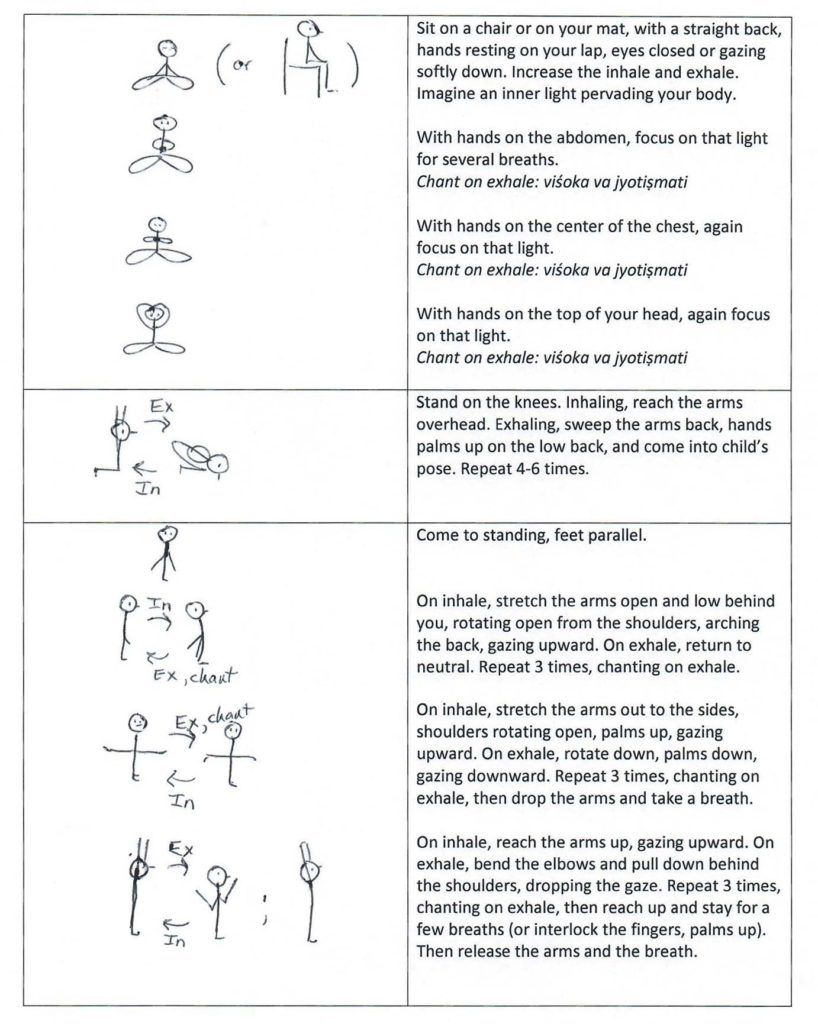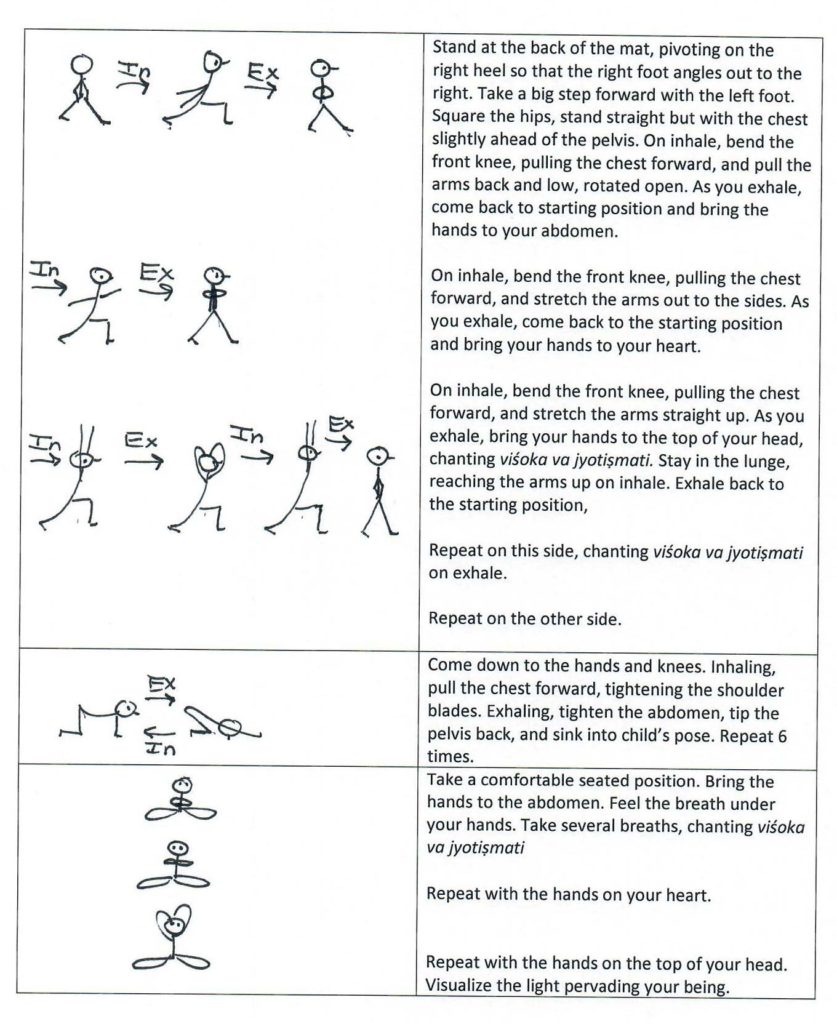These are dark days, and I mean dark both figuratively and literally. We’ve all been bombarded with bad news over this past year, on an astonishing array of fronts, so I won’t make us all feel even worse by listing all the awful things we’re going through. Today, on Martin Luther King’s birthday, what I’d rather do is find something positive to consider. I turned to the Yoga Sutra-s of Patanjali, a collection of short, succinct sutra-s, or threads, composed probably around 2000 years ago by a mystical figure named Patanjali, for some ideas.
Sutra I—36 comes to mind:
viśoka va jyotiṣmati Meditate on that light that is beyond sorrow
This sutra is in the first section, called the Samadhi Pada, in a group of sutra-s that describe methods for overcoming the obstacles of eliminating suffering and reaching enlightenment. This light, that is beyond our sorrow and suffering and pain, is within us, ever-present, waiting for us to discover it. Suffering, according to Patanjali, is a choice. We may experience pain and distress, but we don’t have to suffer. Finding this light within us can help us to dispel suffering.
Another concept from yoga philosophy is that our true nature is not separate from the ultimate reality pervading the universe. One way I think about this is that we are all truly connected. The light that illuminates my being also illuminates yours. It’s the same light.
In the Viniyoga tradition, we often chant while performing poses. Chanting can set up a vibration in the body, helping to bring our focus inward. Chanting also lengthens the breath, so that you will tend to move more slowly to match that extended breath. I’d like to offer you a short practice that uses this sutra during movement. I also would like to offer you the alternative of chanting this sutra, either aloud or silently, as you move through the poses. The poses can serve to help internalize this idea of finding the light by enacting the sense of the sutra with symbolic gestures.
The spelling of the sutra above uses some special symbols to convey pronunciations in Sanskrit that don’t usually occur in English. Here is a slightly more phonetic spelling of the sutra for us Anglophones:
Vee show kah vah, jjoh tish mah tee
Chanting is done on three tones – like do, re, mi. The chant, with the tones, goes like this:
Vi śo ka va, jyo tiṣ ma ti
Vee show kah vah, jjoh tish mah tee
Do re re mi, re re do re
As you do this practice, I hope you will visualize that inner light, and also know that the light is common to all of us.


